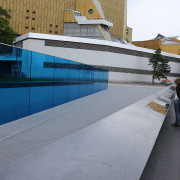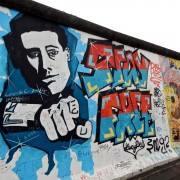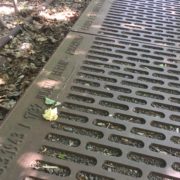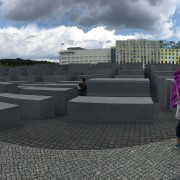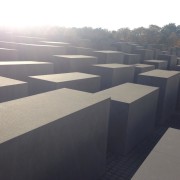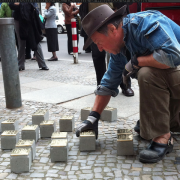Complex Memory in Berlin
By Bryan Alicea
In the 1932 German federal elections, Adolf Hitler’s National Socialist party, or the Nazi party, emerged as the largest political party in Germany, and Hitler was eventually appointed Chancellor of Germany in 1933. While in power, the Nazis enacted discriminatory laws and edicts that shaped the political atmosphere in Germany. Minorities in Germany, particularly Jews, were targeted based on their ethnicity or religion. After inciting the bloodiest war in history and occupying several countries, the Nazis extended their discriminatory practices to the minority populations of the occupied countries. Millions of people in Europe died as a direct result of the oppressive, discriminatory dictates of the Nazi regime.
In the modern day, Germany is a nation that is critical of its past and strives to create complex memory. Germany attempts to mend the atrocities caused by the Nazi regime by reconciliating with other nations and erecting monuments that commemorate the victims of the Nazis prejudicial beliefs. During our weekend visit to Berlin, we had to opportunity to visit some of these monuments and develop our own thoughts and feelings about them.
One of the first monuments we saw was called the ‘Memorial to the Sinti and Roma Victims of National Socialism.’ Located in a park near central Berlin, the monument consists of a large circular pool of water with a triangular stone in the middle. Around the pool, there are stones with the names of the concentration and death camps that the Roma and Sinti were sent to by the Nazis. One name particularly stood out for me, and that was ‘Lety.’ We had visited Lety in the Czech Republic prior to coming to Berlin, and had watched a documentary detailing life in the camp. I felt that I was able to connect with the monument on a deeper level as a result of my personal experience in Lety because I had personally seen the remains of one of the camps where the Roma were held.
After visiting the monument dedicated to the Roma and Sinti victims, we proceeded to another monument that is dedicated to the Jewish victims, named the ‘Memorial to the Murdered Jews of Europe.’ I thought that this monument was rather unique due to the sheer scale and size of it. It spans several acres of land consists of thousands of concrete slabs forming a grid. The slabs are laid along a sloped field and they begin to increase in height as one approaches the center of the monument. At the outer fringes of the monument, the top part of the concrete slabs are around knee level, short enough for anyone to sit on them. From there, I could see the top part of all the slabs in the monument. As I began walking towards the center, I slowly descended the slope and saw how the slabs gradually increased in height the further I went. When I reached the center of the monument, I noticed that the top of the slabs are in fact several feet above me. My vision was significantly restricted since I was only able to see what was directly in front of me. The monument produced a feeling of uneasiness and sense of fear on me because I felt as if I was being enclosed by the gargantuan slabs. I believe that the gloomy feelings that one experiences while walking through this monument is supposed to recreate the feelings of Jews as they were sent to the death camps.
Subsequently, we visited the ‘Memorial to Homosexuals Persecuted Under Nazism.’ The monument is essentially a concrete cube with a small window on the front part. When I peeked through the window, I saw a film of homosexual men kissing each other. Although its design is relatively simple, I thought that the monument was well designed and rather powerful. When we think of the victims of the Holocaust, we usually have the European Jews in mind, and to a lesser extent, the Roma and Traveler populations. We often overlook other minorities that were persecuted by the Nazis, such as homosexuals. This monument is likely to draw the attention of people walking by and raise the public’s awareness of the plight of homosexuals during the Nazi regime as well as the current persecution of homosexuals.
The amalgamation of several monuments commemorating the victims of the Nazi regime in the German capital creates a sense of complex history. The erection of these monuments serves as a method of reconciliation; Germany fully recognizes the realities of its past and how vastly they affected the European continent. By being open about its past, the nation opens itself to discourse and dialogue pertaining to these atrocities and thereby ensures that history does not repeat itself.

